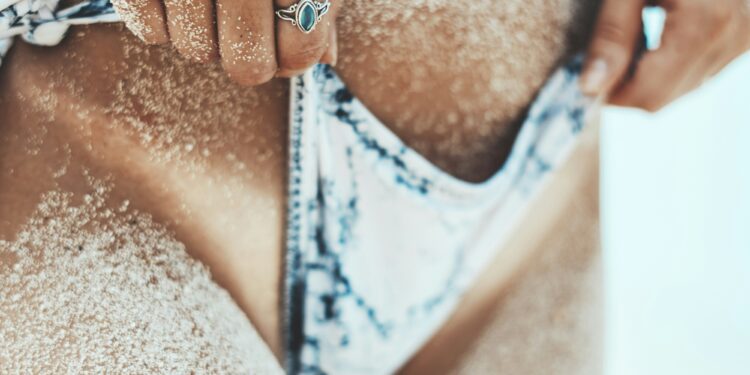A Trend That Burns First, Heals Later
A 17-year-old’s casual kitchen experiment with homemade sugar wax ended in trauma when a blister the size of her thumb popped overnight—revealing a second-degree burn that required medical attention and possibly a skin graft. As outbreaks of similar injuries among teens emerge, public health authorities are raising flags over the so-called “at-home sugaring” trend sweeping social media.
The New York Post reports that kitchen-made sugar wax—crafted from sugar, water, lemon, and often honey—can develop uneven heat concentrations when refrigerated and reheated, causing explosive “hot pockets” that inflict scalding wounds sugarwaxhaven.com+13tyla.com+13nypost.com+13nypost.comindiatoday.in+1nypost.com+1nypost.com. One Iowa teen, Allison Boles, and at least one other victim arrived in emergency departments with wounds alarming enough to prompt burn specialists to issue multiple health alerts.
Sugaring: Ancient Practice, Modern Peril
Sugaring traces back to ancient Egypt but has enjoyed a revival as a natural, eco-friendly waxing method ndtv.com+2tyla.com+2nypost.com+2nakedtruthbeauty.com+1ndtv.com+1. Typically applied warm and removed at body temperature, powdered sugar and lemon mixtures can be gentle when professionally done. But current DIY videos often skip crucial steps: thermometer checks, even cooling, or gradual reheating—all in favor of speed and convenience .
Traditional thermometers and controlled reheating are rarely featured in the viral tutorials that currently flood TikTok and Instagram. Instead, enthusiasts are instructed to “pop” and reheat jars intermittently—an approach now linked to sporadic combustion and explosive liquid eruptions . Healthline and Medical News Today both note that bruising, folliculitis, hyperpigmentation, and scarring can result even from properly performed sugaring—and that improvised, overheated concoctions are far riskier tiktok.com+3medicalnewstoday.com+3healthline.com+3.
Medical Warnings Grow Louder
Dermatologists and burn surgeons emphasize that home-made sugar waxes pose severe scalding risk, particularly when the mixture is reheated in microwaves or over high heat. In the case of Allison, the wax “popped” during stirring after microwave reheating, leading to blistering so severe that emergency clinicians warned of potential chronic scarring nypost.com.
Indian national news outlets reinforce the warning — noting burns, pigmentation changes, and infections from DIY recipes lacking proper cooling and consistency controls . Health authorities recommend avoiding microwave reheating altogether, instead gently warming jars in controlled water baths, and always using a thermometer to confirm safe application temperature.
Why Viral Beauty Hacks Go Wrong
The appeal of homemade sugaring is clear: cheap, natural, and positioned as less painful than salon waxing. Many users report results with minimal cost and environmental impact healthline.com+2medicalnewstoday.com+2nakedtruthbeauty.com+2. But viral success today favors dramatic visual effects—before/after clips, steamy steam, melting taffy textures—often at the expense of accuracy or safety.
Platforms host hundreds of thousands of tagged posts—and Rochelle TikToks trending on “sugar waxing” lack disclaimers about testing, protective gear, or step-by-step safety checks tiktok.com+10indiatoday.in+10nypost.com+10. Some content even guides viewers to refrigerate and reheat mixtures rapidly—practices directly linked to hot-pocket scalds medicalnewstoday.com+5tiktok.com+5nypost.com+5.
Balancing Tradition and Technology
At-home sugaring can remain viable—but only if users acknowledge its complexity. Traditional methods assume gradual heat application, passive cooling, and sensory assessment of temperature. But the virality of quick hacks disrupts that cadence, turning kitchen timers and thermometers into afterthoughts.
Dermatologists recommend treating sugary paste like a culinary experiment requiring precision: consistent stirring, temperature control, and incremental testing on small areas of skin. Medical News Today suggests patch tests, post-care moisturizers, and avoiding sugaring on sunburned or retinoid-exposed skin .
Health Advisories and Platform Responsibilities
Public health messaging has begun to respond. In April 2024, Indian lifestyle outlets and U.S. medical advocates issued strong advisories against DIY sugar waxing—urging users to opt for pre-made sugaring kits or professional services indiatoday.in.
TikTok claims it adds age restrictions and warning labels to some DIY cosmetic videos, yet serious safety guidance remains rare in trending tutorials nypost.com. Calls are growing for platforms to require safety disclaimers, especially on content depicting heat or chemical processes performed at home.
Safer Alternatives and Skin-Safe Practices
For enthusiasts drawn to sugaring’s natural appeal, several industry experts recommend:
- Purchasing pre-formulated sugar-wax kits, which often include temperature guides and reusable strips.
- Warming paste in bath-style containers, avoiding microwaves entirely.
- Conducting patch tests before full application.
- Avoid sun exposure, retinoid products, or active skin conditions prior to sugaring nypost.comindiatoday.ingreenhausdeco.com.
- Consulting with a dermatologist if persistent irritation, burns, or scarring occurs.
Towards Responsible DIY Culture
The sugaring burn epidemic is a cautionary lesson on the limits of DIY trends. It exposes how viral appeal can outpace safety, particularly when amateur creators offer seemingly simple instructions for complex processes.
It also raises broader questions about platform accountability. If manufacturers of home beauty kits must include warnings and temperature control guidance, so too should platforms hosting instructions designed for unsupervised users—many of them under-age.
Final Thought: A Sweet Trend with Bitter Consequences
Sugaring can be gentle, eco-friendly, and effective—but not when rushed, heated unevenly, and applied without care. As kitchen-crafted beauty trends proliferate online, users must recognize that mishaps are not myth—they are frequent, sometimes scarring, and entirely preventable.
Until platforms, creators, and consumers align around safe practices, DIY sugaring will remain a sweet promise, too often ending in burns.















